Smuggled booze, awkward dancing, clumsy kissing and the burning stare of a watchful teacher are experiences that may spring to mind when you think of secondary school dances in the UK. However, if you were a pupil in mid-1980s Chicago, you might find house music heroes such as Frankie Knuckles and Ron Hardy rocking up on a weekly basis to turn your school gymnasium into scenes of sweat-drenched jacking pandemonium.
In her new book, Dance Your Way Home: A Journey Through the Dancefloor, Emma Warren describes such a scene as “the dance music equivalent of having Jean-Michel Basquiat drop into your after-school art club, or Serena Williams cover Friday afternoon PE”. It’s one of many beautifully detailed and captivating moments in a book that captures unique and untold, yet pivotal, dancefloor moments throughout history and the significant impact they have culturally, socially and politically.
As a result, Dance Your Way Home is not a history of hip nightclubs, nor the same archetypal or familiar drug-fuelled stories from dance music history. Instead, Warren explores movement in marriage to music, while crafting a narrative that suggests childhood holidays to Butlin’s are as vital a piece of social history as getting bug-eyed in Berghain. These moving and powerful stories from across the globe are rooted in community, solidarity, agency and self-expression – but crucially, can take place anywhere and everywhere. “The dancefloor isn’t just the floor of your local discotheque,” she points out. “It’s also a work do or a sweaty basement rave. It’s anywhere we gather to dance, at any point in history.”
The dancefloors Warren explores span from busting moves to Top of the Pops in living rooms to 1980s youth clubs. She digs into the ideologies and moral panic behind the “down with jazz” protests in 1930s Ireland, via skanking in smoke-filled dancehalls, slow dancing at school discos, and the joys of dancing in darkness to bone-shaking sub-bass.
Here DJs, artists and producers talk about their own special moments they’ve had on dancefloors outside the nightclub.
A Guy Called Gerald

Before I was doing music, dance was my main expression. We’d have live music at church as a kid and people were pretty physical to the music in there. Then there would be blues or sound system parties – dance was just always there in my life. In my early teens I studied classical, jazz and contemporary dance. Making music was an accident. I bought a drum machine just to time doing dance exercises to. When I was growing up going to dances in youth clubs and community centres, the energy wasn’t around the DJ, it was around dancers – and they were serious fucking dancers. I would just be back against the wall watching their feet move. Rival crews would have dance-offs and we’d be talking about that all week. The DJ was in the background, they were just somebody playing somebody else’s music. Me and my brother got deep into dancing and even started doing ballet, but I got dragged away by music. Even when I moved into music production, I was always envisioning it for rhythmic and intricate dancers. Voodoo Ray I didn’t see as being for a party; it was a tune made for these dancers that had been so inspiring to me.
Tom Russell, Overmono
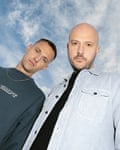
We grew up in rural south Wales and didn’t go to clubs because there just weren’t any. We had to make our own fun. I had a small sound system and used to take it to various locations – little forests, fields, wherever we could get away with a party. There was this abandoned quarry we used and one weekend our dad was away and I was supposed to be keeping an eye on Ed [younger brother of 10 years and the other half of Overmono], who was about 11 at the time. We decided to throw a party in the quarry and that was Ed’s first ever introduction to dance music on a system. It was pretty tiny and it would often be competing with the sound of the generator, but it was the only thing around and we loved it. If you could pull 100 people it would be a mega rave but it was usually between 30 and 50. Everyone knew one another and we’d build a fire that people would sit around as it was pitch black out there. People would form a dancefloor in front of the decks and the banks of the quarry would keep the sound in nicely. The sun would come up and it was just incredible – really magic. It was our only experience of hearing music at a loud level. We’d always fantasise about what it must be like to be in a club or proper rave, but you realise when you do end up in clubs how special dancing in that quarry was.
Eliza Rose
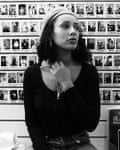
I was recently sitting in the pub with my mum and boyfriend, catching up. I was telling her I had a naughty midweek night out and asking: why couldn’t I just be normal and call it a night at a reasonable hour? She turned to me and said, “Well, nothing’s changed, no one could ever drag you away from a party even when you were two.” She told me about going to a party at a community centre where I stood right up next to the speaker the whole entire time, staring at the lights. As she was telling me this, I had this really vivid memory flash of a black grate, a vibration and these flashing lights – like a two-year-old notion of what I must have been experiencing. My mum said when it was time to go home I had a massive tantrum and was hanging on to the speakers, crying and screaming about how I didn’t want to leave. My boyfriend gave me a look and was like, “Literally nothing has changed.” I was cracking up because it’s so true. I’m still the same – I never know when to go home.
Manuka Honey
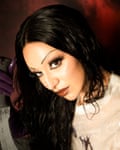
Afterparties are always my favourite places to dance. Grinding to hot girl singalong songs from the mid-00s like the Pussycat Dolls, Danity Kane and Nelly Furtado. Once you’ve changed into trousers with an elastic waistband and out of rave shoes, there is rarely a wrong move to make. I love embracing the rush of post-club energy while also being in the intimate environment of a mate’s home; staying present in my body and sociable at the most societally unsociable hours. Dancing at an afters is like making the most of a last resort; you’re in denial about the sun coming up and it feels like a joyful apocalypse ritual. What a strange and wonderful space to occupy.
Seth Troxler

There were lots of underground warehouse parties in Detroit. People would use bolt cutters to open abandoned buildings. There was one warehouse rave where the Swat team came in through the ceiling on ropes, with guns. It was like a movie. But the one that really sticks out was a party to celebrate the anniversary of Kompakt records and the warehouse was lit only by candles. I distinctly remember the sun coming up and merging with all these candles and the vases of white flowers on the DJ booth, and all these steamy windows in the building. It was really special. Michael Mayer played for around seven hours and he played a white label of Ricardo Villalobos’ Dexter. Everyone in Detroit for the next six months was on the message boards wanting to know what that track was.
Joy Orbison
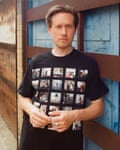
Playing records at home with my four-year-old stepson has been pretty magical. I’m a DJ but it’s not something I’ve pushed on him. They were having parties at nursery and he wanted to recreate it at home. He’s obsessed with Ghost Town by the Specials and Gary Numan. We play him the Ghost Town video and he’s transfixed by Terry Hall. It felt quite poignant after Terry’s death because his son, Felix, is a mate of mine and my stepson has been so drawn to this music. He really likes to dance to it, and it’s made me rethink and understand my interest in dancing because he will not let you just stand there – he gets very upset if you’re not dancing. It’s nice knowing in that environment nobody is judging you. I never knew how I danced before because I’ve always been in clubs as a DJ, so I’ve had to rethink that and learn to have fun with it. It’s fascinating watching him dance because he’s got nothing to base it on – he’s just doing what comes naturally to him. I’ve never really been around that before. It’s been a really beautiful and special thing and it’s played a big part in my relationship with him.
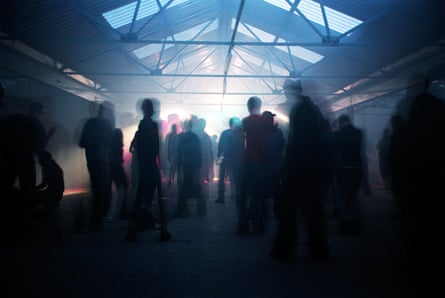
LP Giobbi
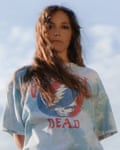
My first memory of dancing with other people took place in a field when I was about six. It was at a Mickey Hart solo show – the drummer for the Grateful Dead – and it was during the day at an outdoor park in Eugene, Oregon. My parents took me and as soon as the music started I bolted towards the front of the stage and spun my little heart out. I remember feeling so much joy to be around other people feeling the way I was feeling and expressing it in free-form movement – like only Dead Heads can. My parents cultivated a joy of live music in me very early and I am forever grateful to them for that.
Jlin
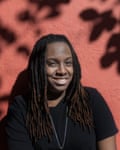
I was introduced to dance at a very young age. My mother and father used to go stepping on the weekends. They would go to stepper sets – a very Chicago style of dance. My dad would be in a suit and my mum in a nice dress. You dressed your best and you went dancing – that’s what they did. They taught me how to step and every Sunday we used to dance at home after church – we would listen to [Chicago radio DJ] Herb Kent. I always have dances in my mind. I have an entire ballet in my head. I know exactly how I want it to be. I’m always thinking about movement and dance. Not even intentionally sometimes. Dance is always, whether I realise it consciously or subconsciously, very much in the orbit space of how I function.
Luke Una

There’s a place in Croatia called Barbarellas. It’s an open-air club with no corners and no ceilings – in the trees, on the edge of the sea. It’s set back and it’s not easy to get to, you have to travel – it’s a journey. It’s got the most remarkable sound system, very stripped back and rustic, like Ibiza in the late 1970s. There’s no shininess or ostentatiousness. One night Kelvin Andrews and Balearic Mike were DJing and it was about 7am. The sun was coming up through the trees and it was beautiful. There were maybe 300 people left out of 2,000 – the spartans, the tribal banshees still holding on. Kelvin dropped Can You Feel the Force [by the Real Thing] and it was such an explosion of emotion. I was quite cosmic myself but I remember two friends pointing at each other and I thought I saw lightning between their fingers and then this track came on. It was a magical moment – everyone was on the same wavelength. You live for those moments and you’re lucky if you get one every 10 years. It was one of the most meaningful and emotional times in my life. It felt like a moment lost in time: as the rest of the city slept, this place hidden away in the trees was coming alive. I’m getting goosebumps now just thinking about it.

 1 year ago
50
1 year ago
50










 English (US)
English (US)